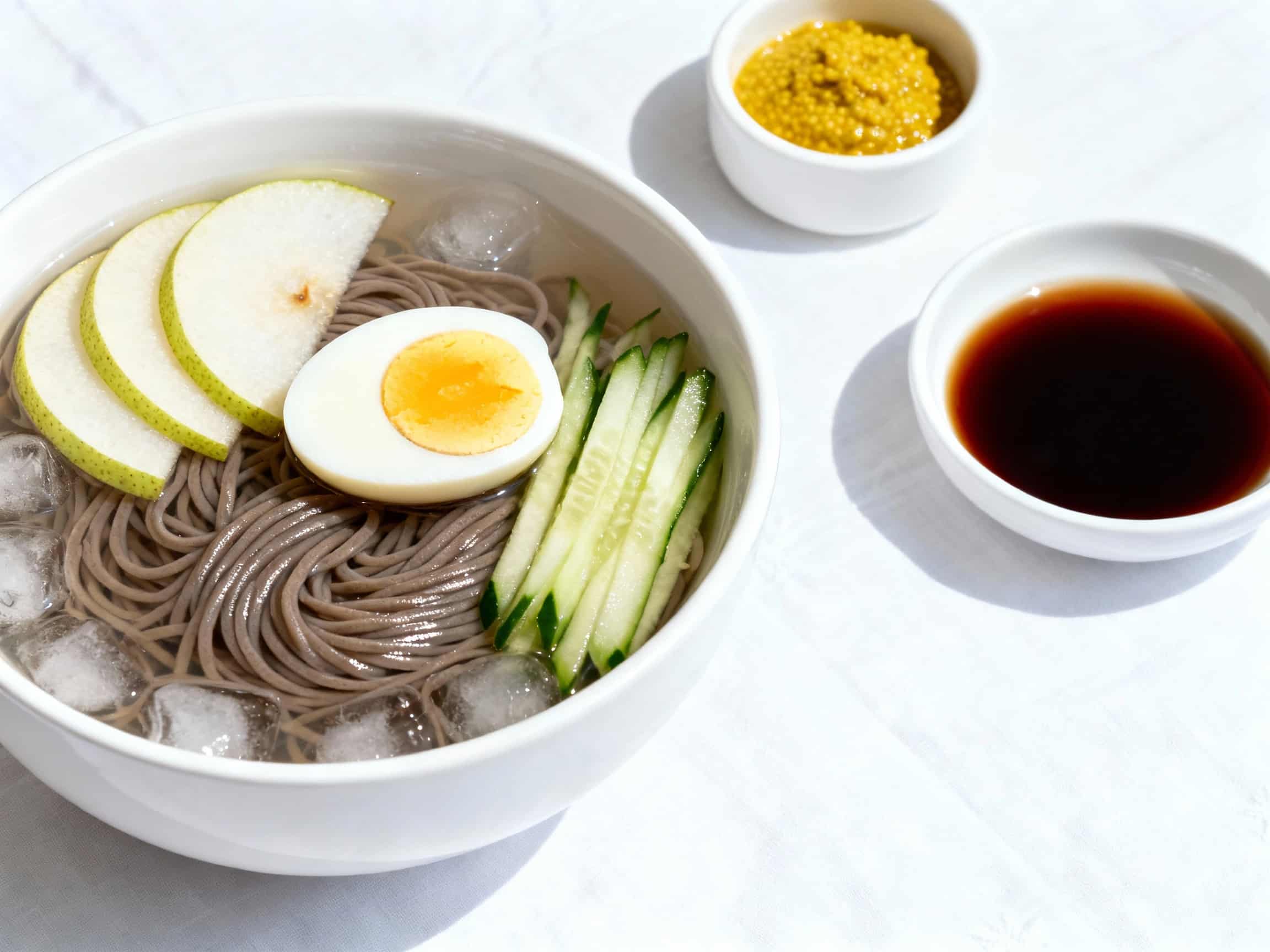
Naengmyeon
냉면
- Country
- Korea
- Region
- Not specified
- Recipes
- 0 Recipes
Dish information
Naengmyeon, or cold noodles, is a quintessential Korean dish, especially revered during the warm summer months, though enjoyed year-round. Its origins are steeped in the northern regions of Korea, particularly Pyongyang and Hamhung, where it was historically a winter dish. The story goes that in ancient times, people in cold northern Korea enjoyed it during winter by storing the broth and ingredients in large earthenware pots buried in the snow. As refrigeration became common, it transitioned into a popular summer refreshment. There are two main varieties: "mul naengmyeon" (water naengmyeon), featuring buckwheat noodles in a tangy, icy beef or radish broth, and "bibim naengmyeon" (mixed naengmyeon), which consists of the same noodles tossed in a spicy gochujang-based sauce without the broth. A hard-boiled egg and slices of Korean pear or cucumber are common garnishes, adding texture and sweetness. Naengmyeon gained significant cultural prominence during the Joseon Dynasty, and its distinct preparation methods and regional styles have been passed down through generations. Today, it remains a beloved dish, a symbol of Korean culinary heritage. Restaurants specializing in Naengmyeon are widespread, with many claiming to maintain traditional recipes passed down for centuries.
Timeline
Buckwheat cultivation becomes widespread in Northern Korea, laying the foundation for noodle dishes like Naengmyeon.
Naengmyeon evolves as a traditional winter delicacy in the northern regions of Korea, particularly Pyongyang.
Refugees from North Korea introduce Naengmyeon to the South, leading to its widespread popularity across the peninsula.
Specialized Naengmyeon restaurants become prominent in urban centers, offering both Mul Naengmyeon and Bibim Naengmyeon.
Related recipes
0 recipesWe'll add related recipes for this dish soon.